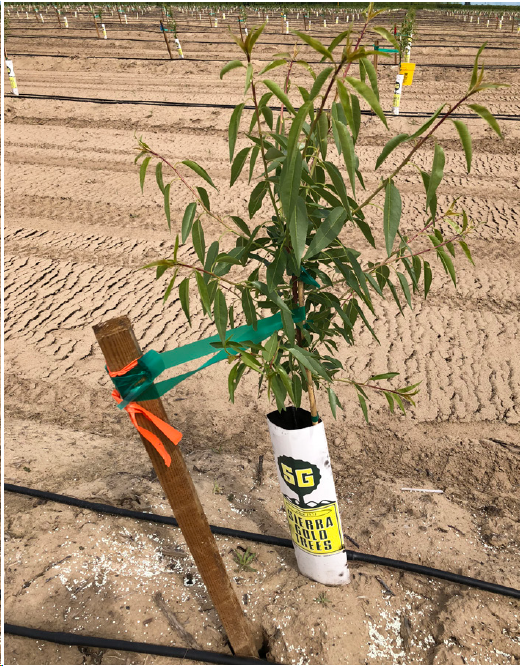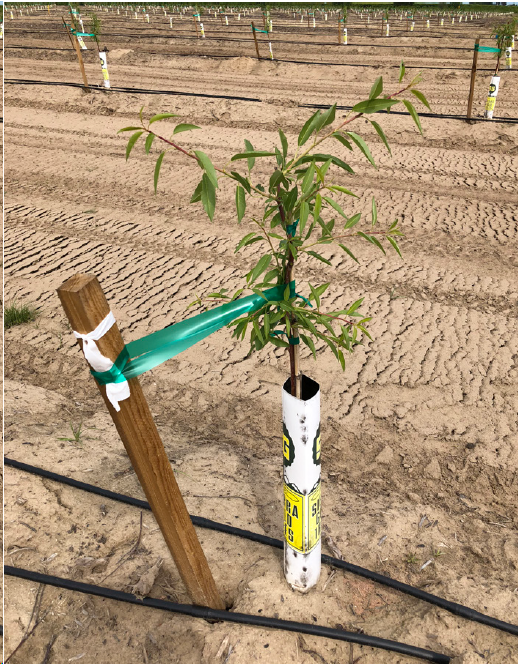
How does WOR impact orchard productivity?
Many factors of production are important for generating good yields from almond orchards after WOR, and the grower must consider the potential tradeoffs of inputs like water and fertilizers with expected kernel yields. UC research on the long-term effects of WOR over a period of 9 years suggests that WOR may allow growers to maintain or increase yields under typical nitrogen and irrigation regimes.
Initial results also suggest that second-generation orchards planted following WOR require a greater input of nitrogen fertilizer in their first season to counteract N immobilization to decompose woodchips and reduced shoot growth, but thereafter trees “catch up” to achieve the expected growth rate and do not require additional fertilizer in subsequent years. Another study in 2004 showed that, without any nitrogen fertilizer, almond trees grown in barrels with wood-chip-amended soils exceeded the growth rate and leaf petiole nutrient levels of trees grown in non-amended soils by the third year after planting (Holtz and Caesar-TonThat, 2004). These results suggest a potential for growers who incorporate wood chips into their orchard soils to reduce fertilizer inputs after the first year without sacrificing tree health or development.


